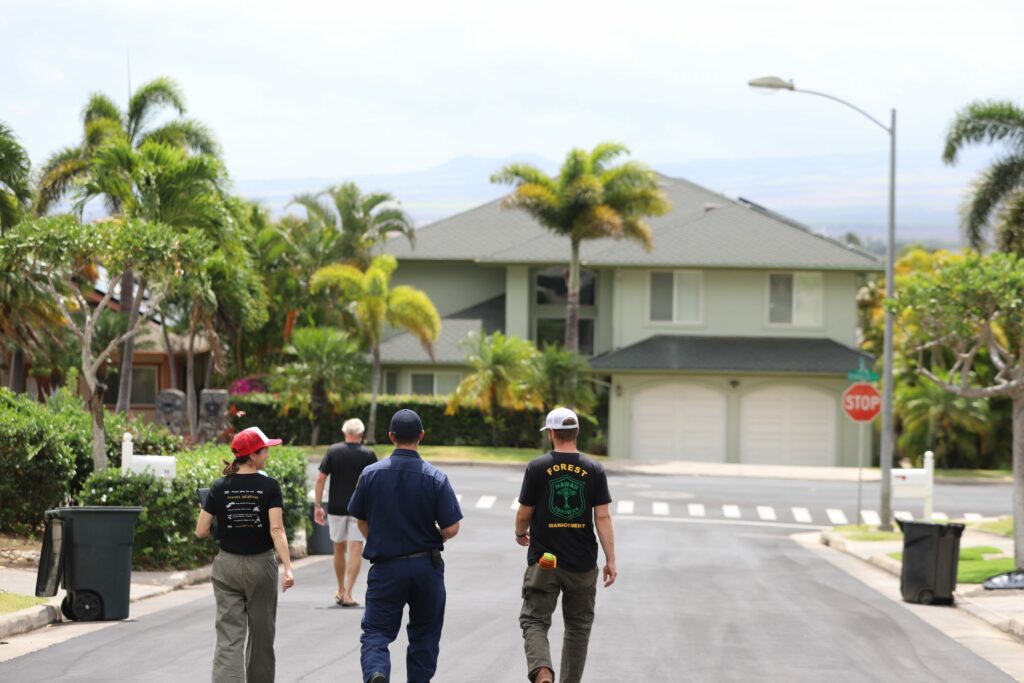Residents aware of the dangers can take some steps to protect their communities, but they’re still looking to government to enforce stricter codes for all.
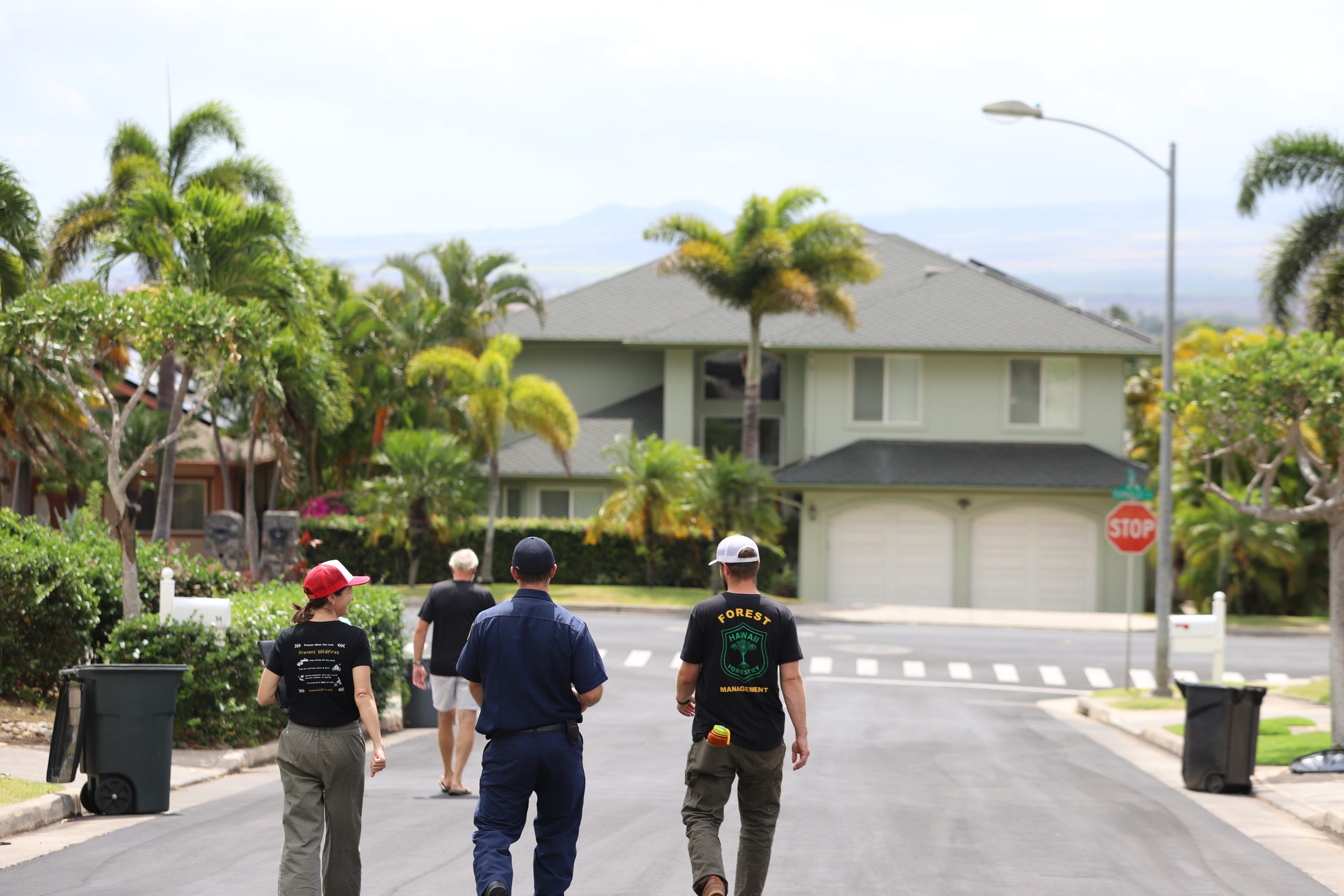

Thomas Heaton/Civil Beat/2024
Editor’s Note: This is the last of three stories about the contribution of Hawaii’s built environment to the spread of catastrophic wildfires. Read the previous stories:
A group of residents at The Island and Bluffs at Maui Lani recently explored the pill-shaped subdivision on the western edge of Kahului, backyard by backyard.
All the houses were built after 2000. Some have two stories, many have swimming pools, most are decorated with tropical foliage and all have freshly mown lawns.
The residents walked with firefighters and staff from the Hawaii Wildfire Management Organization, looking at fence lines, roofs, gutters, windows and walls. They pondered the preened lawns and foliage. They eyed each home’s characteristics and surroundings.
They were evaluating the community’s wildfire hazards.
Across Hawaii, neighborhoods have been working to safeguard themselves from the ever-growing peril of wildfire after the disaster of Aug. 8, 2023, in what they say is the absence of significant government action to fortify the built environment.
This Maui community is among many requesting an appraisal of fire hardiness, the first step to becoming accredited as a Firewise USA community. The initiative started in the early 2000s to educate residents to better safeguard themselves from a fate similar to Lahaina’s.
Several have faced near-misses.
They are willing to do what they can on their own. But many would prefer more government regulation to ensure that entire communities, not just those residents most aware of fire risks, take steps to protect themselves.
The Lahaina disaster prompted a surge of interest in the Firewise program. The number of communities recognized by Firewise is close to doubling, HWMO co-executive director Nani Baretto said.
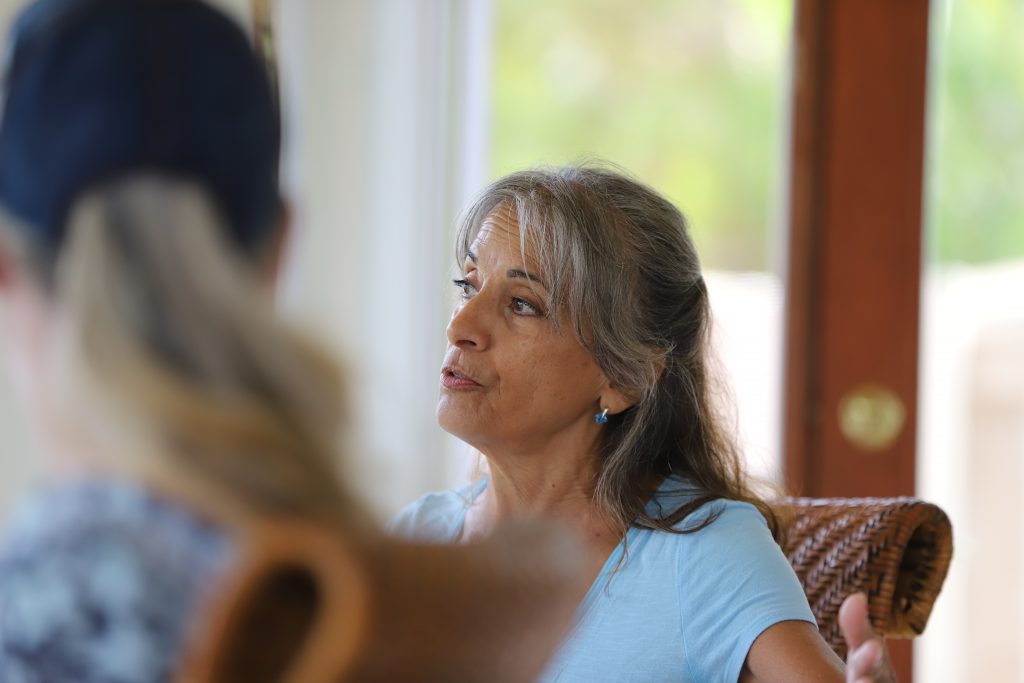
 Linda Jenkins, a resident of The Island and Bluffs at Maui Lani, was integral to the establishment of Launiupoko as a Firewise USA community, before Lahaina burned. (Thomas Heaton/Civil Beat/2024)
Linda Jenkins, a resident of The Island and Bluffs at Maui Lani, was integral to the establishment of Launiupoko as a Firewise USA community, before Lahaina burned. (Thomas Heaton/Civil Beat/2024)
The wildfire organization ran the program for a decade before August 2023, signing on 15 communities in Maui, Molokai, Oahu and the Big Island.
The Big Island-based nonprofit has since accredited 11 more and another 15 are in the pipeline, Baretto said.
The Department of Hawaiian Home Lands is encouraging its homesteaders’ associations to work with HWMO on wildfire mitigation. And lawmakers endorsed the program last year, after the wildfires.
Linda Jenkins, who lives at The Island and Bluffs, has seen the value of Firewise for years, having co-chaired Launiupoko’s Firewise committee after it formed in 2016. She moved away from the leeward Maui settlement just before Hurricane Lane fanned fires that scorched more than 2,200 acres, destroyed 21 structures and 20 vehicles and forced evacuations.
Jenkins wrote to Civil Beat soon after Lane hit the islands, in response to a piece by University of Hawaii wildfire expert Clay Trauernicht.
“The answer to this is not a simple one and will require time and effort on the part of our community and our leaders but needs to be addressed to prevent this or a worse fire disaster from happening here again,” Jenkins wrote.
‘Into Their Own Hands’
Wildfire has blackened thousands of acres in the Waianae and Makaha valleys on Oahu, time and again, often started by arson. But with little help, before August of last year, the community has worked in its own way to mitigate the peril.
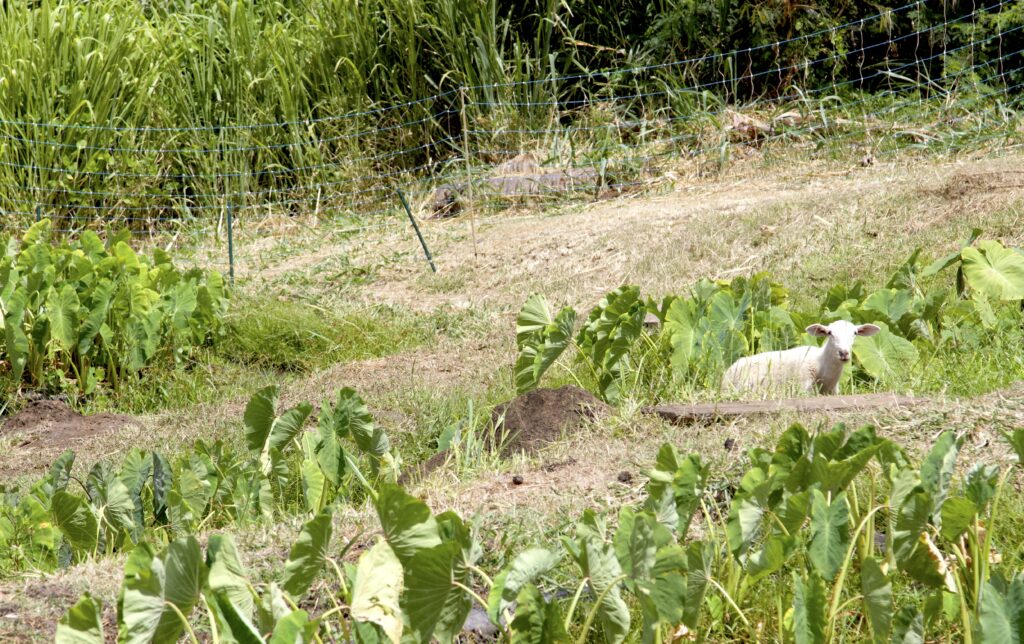
 A sheep grazes around kalo ponds at Ka’ala Farm and Cultural Learning Center in Waianae Valley. Electrified fencing is used to control where they graze flammable vegetation. (Thomas Heaton/Civil Beat/2024)
A sheep grazes around kalo ponds at Ka’ala Farm and Cultural Learning Center in Waianae Valley. Electrified fencing is used to control where they graze flammable vegetation. (Thomas Heaton/Civil Beat/2024)
The Ka‘ala Farm and Cultural Learning Center, nestled deep in the valley, has integrated wildfire into its curriculum since at least 2012, when the educational organization’s traditional Native Hawaiian hale was razed in a fire of more than 1,200 acres. It was again threatened four years later, when another fire scorched 1,300 acres, and two years after that during Hurricane Lane.
The 2018 fire burned approximately 3,000 acres, trapping people at the farm. Putting it out required military, state and county firefighting resources and personnel.
In July, during this year’s wildfire season, the valley appeared relatively green. But “don’t be fooled,” said Eric Enos of Ka‘ala Farm.
Enos and the entire community know where the fires start and that arson is often the reason. More than 99% of Hawaii’s fires are started by humans, either accidentally or on purpose. Poster boards at Ka‘ala detail previous fires and what the learning center is doing to prevent more.
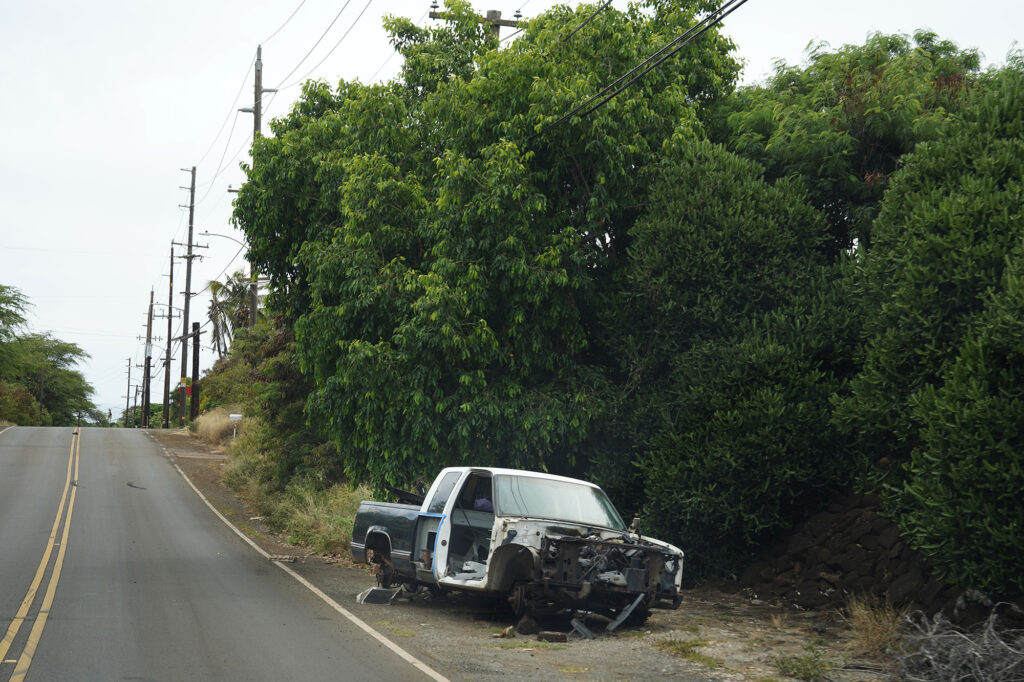
 An abandoned pickup truck on Waianae Valley Road in West Oahu, an especially at-risk area for wildfires. (Kevin Fujii/Civil Beat/2024)
An abandoned pickup truck on Waianae Valley Road in West Oahu, an especially at-risk area for wildfires. (Kevin Fujii/Civil Beat/2024)
“Look at where fires started before. That will help you trace where fires are going to start again,” Enos said.
Waianae and Makaha are at the top of the U.S. Forest Service’s list of communities at risk from wildfire in Hawaii. The communities are more likely to have wildfires than at least 98% of the rest of Hawaii.
And the fires predominantly start along Waianae Valley Road.
The Ka’ala community has run several programs to address the hazards, including a July cleanup along that road to remove trash, mattresses and a pile of tires. Most recently, the community directed funding from Hawaiian Electric Co. to Leihoku Primary School to pay for a firebreak on the campus’s northern fringe.
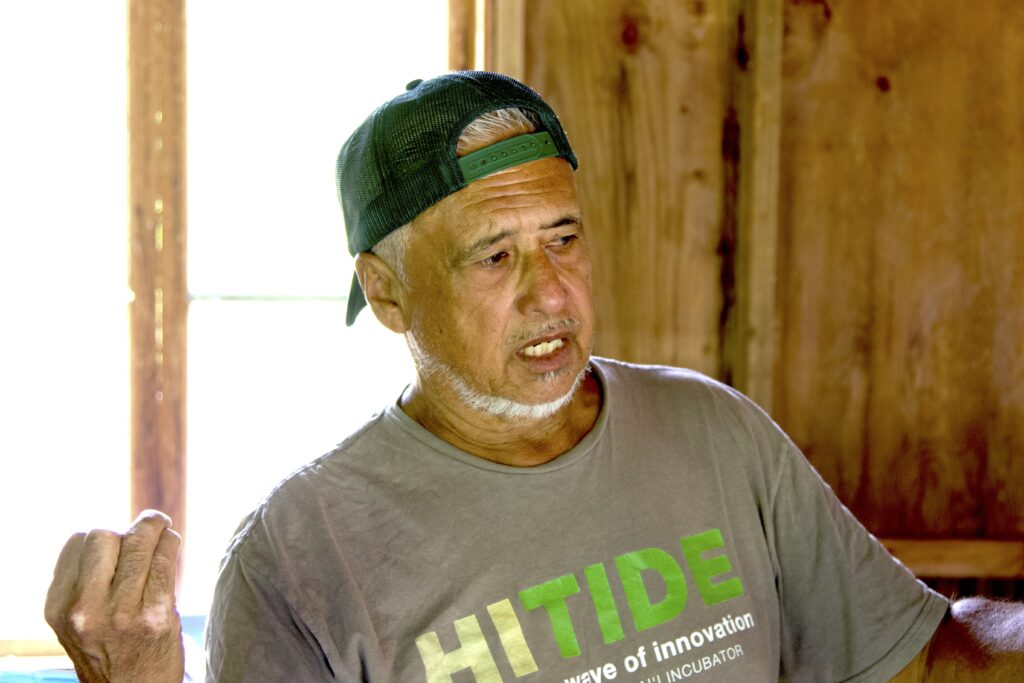
 Eric Enos has been aware of the perils of wildfire in Waianae Valley for more than a decade. (Thomas Heaton/Civil Beat/2024)
Eric Enos has been aware of the perils of wildfire in Waianae Valley for more than a decade. (Thomas Heaton/Civil Beat/2024)
Farms and homesteaders, including Ka’ala, are grazing goats and sheep to keep down invasive, fire-fueling vegetation.
Fences are being extended to protect crops and expand the area where ungulates can graze. Josiah Jury of Kuahiwi Fencing & Wildlife Services is doing the work for Enos in his spare time.
Earlier this year, the Wai‘anae Moku Kūpuna Council joined Rep. Jill Tokuda to meet with military personnel on how to evacuate a part of Oahu that has a single exit. The reopening of an evacuation road for public use was announced not long after.
Jury, a resident of the Waianae DHHL homesteads makai of the farm, said the lack of official action has been especially frustrating after several years watching the valley burn.
‘You’re Never Going To Get Everyone’
The Aug. 8 fires made it clear to some people that the state needs to invest more in mitigation.
Officials have been more willing to cut grass and firebreaks than to address the built environment, despite lawmakers identifying building standards as a key challenge in September.
The Western Fire Chiefs’ Association backed that up in the Aug. 8 fires after-action report. The association said Maui should add rules for the wildland-urban interface — where rural, fire-prone areas meet structures – into its codes as well.
“Mitigation almost always gets relegated to the lower levels. There’s so many other basic needs that need to be met within the community that they’re missing the opportunity,” said Karl Fippinger, vice president of fire and disaster mitigation at the International Code Council.

 A small firebreak was cut mauka of Leihoku Elementary School, an area that has been threatened by wildfire numerous times. (Kevin Fujii/Civil Beat/2024)
A small firebreak was cut mauka of Leihoku Elementary School, an area that has been threatened by wildfire numerous times. (Kevin Fujii/Civil Beat/2024)
Maui County has indicated it’s going to increase fines for landowners with overgrown vegetation. Kauai County Planning Director Ka’aina Hull said that his department is working with the fire department to understand what it is authorized to do – such as requiring retrofitting or upgrading of fire-prone homes or developments
On the state level, little is happening. The state building code is currently paused under Gov. Josh Green’s emergency housing proclamation and the state mandated the counties to allow increased density in neighborhoods – four units per property. Buildings that are close together can spread fire.
The State Fire Code, meanwhile, does not include building standards in its subchapter on the wildland-urban interface. Nor do any of the state’s building codes specify how to build in the WUI.
The fire code is based on the NFPA 1 codebook, a stack of regulations developed by the National Fire Protection Association. The State Fire Council chooses the codes it believes are relevant to Hawaii, setting the minimum standards for county fire codes.
The other codes work that way, too – residential, electrical, building and plumbing codes are based on standards developed by the International Code Council.
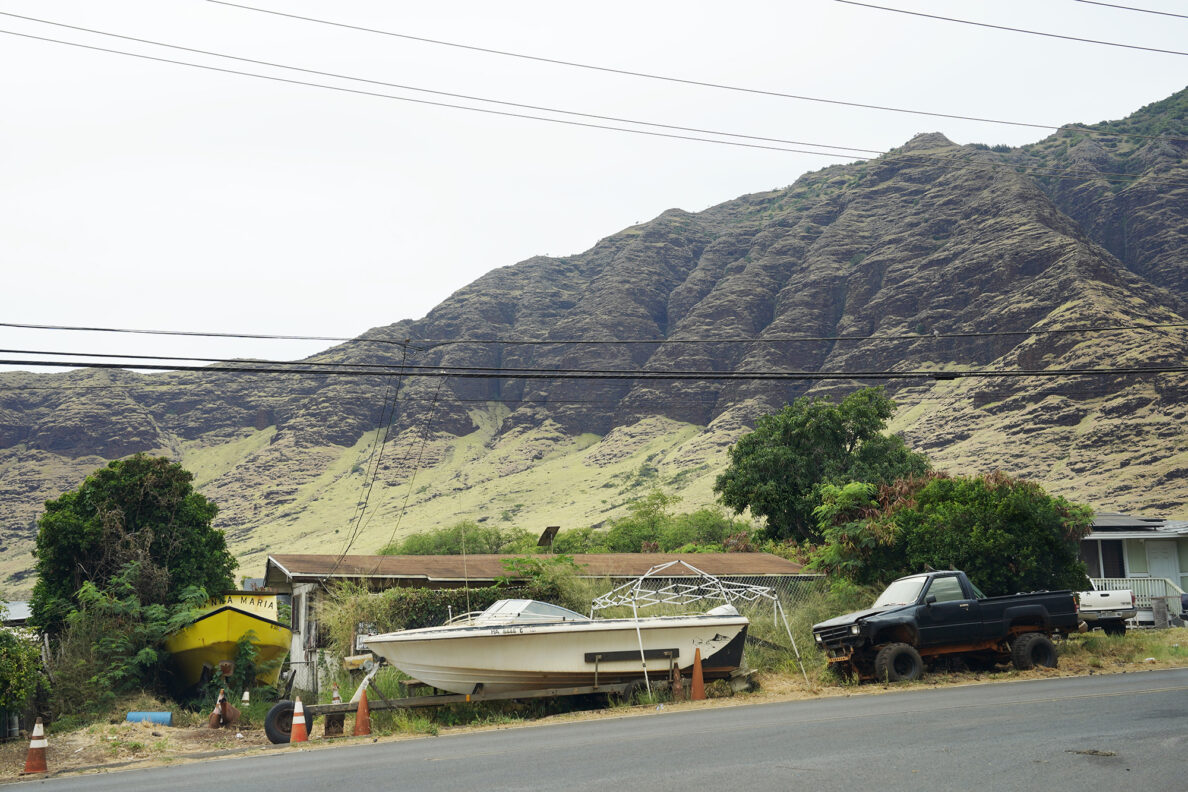
 Anything close to homes, not just vegetation, can pose a risk in the wildland-urban interface, such as in Waianae Valley. Once a fire starts it can grow rapidly in such areas. (Kevin Fujii/Civil Beat/2024)
Anything close to homes, not just vegetation, can pose a risk in the wildland-urban interface, such as in Waianae Valley. Once a fire starts it can grow rapidly in such areas. (Kevin Fujii/Civil Beat/2024)
The ICC puts out a WUI-specific codebook, which the state could adopt in various forms, though it’s entirely up to Hawaii to make that decision, Fippinger of ICC said.
California, Colorado, Texas, Montana and several other jurisdictions have implemented wildfire codes, some based on the ICC.
Elizabeth Pickett, co-executive director of HWMO, used to believe that risk could be wholly addressed by communities taking on the work themselves. She’s changed her mind.
“I’ve recently become a fan of codes enforcement and regulation for less willing actors,” Pickett said. “The Firewise community program is really meant for those willing participants. And you’re never going to get everyone.”
But government fire prevention initiatives have never been an easy sell, nationwide. In Hawaii, fire prevention has typically accounted for 2% to 4% of county fire and public safety budgets, ranging from $887,000 to $5.6 million.
Many efforts faced pushback from developers and construction professionals who claimed the cost of materials would skyrocket. Some residents felt the same way.
In Hawaii, some question whether state and local governments have the capacity to enforce more regulations when they already struggle to do so for the existing ones.
“It causes quite the conundrum with the local elected officials,” Western Fire Chiefs Association CEO Bob Roper said. “They know their communities. They know what can be afforded. They know the political consequences of a decision one way or the other. That’s why across the country, after a fire, code adoption is widely varied.”
Austin County, Texas, instituted its own code for the wildland-urban interface in January, 2021, largely the product of close collaboration between developers and the county, said Justice Jones, Austin Fire Department wildfire mitigation officer.
All came to acknowledge that “rebuilding communities that are just going to burn again isn’t good leadership or sustainable,” Jones said.
One way to garner public support for new codes and regulations is for counties to hire head architects to ensure that the rules don’t go too far and can be followed, said David Sellers, president of the Maui Chapter of the American Institute of Architects.
The newly resurrected State Fire Marshall’s office may expand WUI codes, complementing the efforts of the State Fire Council, which has developed fire codes for the past 38 years.
But new codes won’t affect the 420,000 buildings already standing in Hawaii. Those structures pose their own dilemmas.
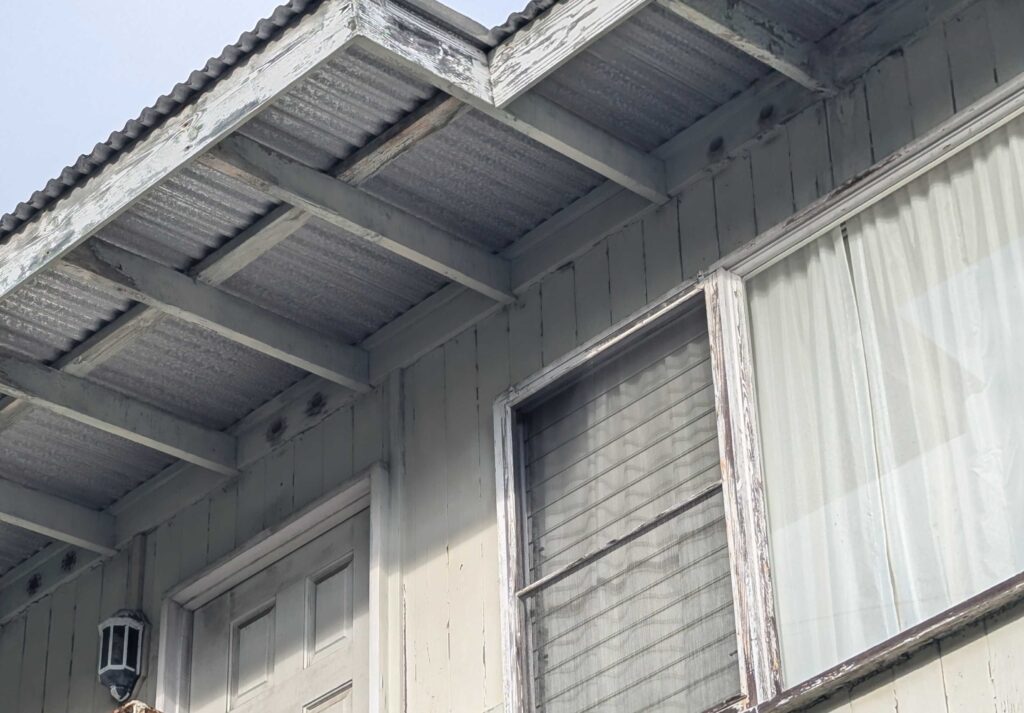
 The circular vents underneath the roof promote airflow and prevent moisture accumulation.They are required by most building codes. But if left uncovered, they can suck in embers during wildfires, starting fires in the roof space. (Thomas Heaton/Civil Beat/2024)
The circular vents underneath the roof promote airflow and prevent moisture accumulation.They are required by most building codes. But if left uncovered, they can suck in embers during wildfires, starting fires in the roof space. (Thomas Heaton/Civil Beat/2024)
Headwaters Economics, a Montana nonprofit research organization, is analyzing the cost of retrofitting homes in Hawaii.
The study will take into account increased contractor and labor expenses, common architectural characteristics and the availability of fire-retardant materials, said Kimiko Barrett, senior wildfire research and policy analyst.
The report has not been published. But Barrett estimates that building stronger homes in Hawaii will cost 10%-20% more than in California, with low-level retrofitting costing $2,200 to $2,400.
Mid-level protections that help stave off wind-borne embers could cost $11,000 to $18,000. A full retrofit could run over $100,000, given that it would likely require a new roof.
Improved fire standards could increase the cost of a new, single-story, 1,000 square-foot residence by $15,000 to $40,000.
Mitigating Now, For The Future
The organization that has led wildfire-mitigation efforts since 2000, meanwhile, is facing a funding cliff.
An application by the Hawaii Wildfire Management Organization for a grant during the 2024 legislative session was ignored. The grant could have helped keep the program afloat.
HWMO relies on federal funding to run its Firewise program but that will expire in September, co-executive director Baretto said.

 U.S. Sen. Brian Schatz, center, admits that Hawaii not done enough to pursue wildfire mitigation funding in the past. But that has changed. Schatz is pictured here with Rep. Ed Case, left, and Sen. Mazie Hirono, right. (Nathan Eagle/Civil Beat/2023)
U.S. Sen. Brian Schatz, center, admits that Hawaii not done enough to pursue wildfire mitigation funding in the past. But that has changed. Schatz is pictured here with Rep. Ed Case, left, and Sen. Mazie Hirono, right. (Nathan Eagle/Civil Beat/2023)
“We’re nonprofit, so we’re always in this predicament. We’re always having to look for funds. But right now I see a gap that we’re going to have to fill somehow with no funding,” Baretto said. “Meanwhile, everybody’s pointing everybody in our direction and nobody’s paying for it.”
And this year’s round of federal Community Wildfire Defense Grants funded just one hazard-mitigation project. That $4.6 million project was focused on post-fire revegetation, while another $1 million was set aside to update and create nine wildfire hazard assessments. More than 30 applicants from Hawaii asked for close to $60 million in mitigation projects.
Hawaii must compete against better-known wildfire states such as California, New Mexico, Arizona and Texas. Hawaii’s congressional delegation must pursue funding “as aggressively as possible,” because Lahaina will not be a one-time event, Sen. Brian Schatz said.
“I’m mixing my metaphors here, but this was not a 500-year flood,” Schatz said. “Even if it was, we’re now in a phase of climate where we should expect this to happen every couple of years.”
Call And Response
Many mitigation efforts are continuing without government help.
On the Big Island, Waikoloa Village residents have been told that they will soon have an alternative evacuation route. The community has faced down the largest wildfires in Hawaii’s history, including a 40,000-acre fire in the center of the island.
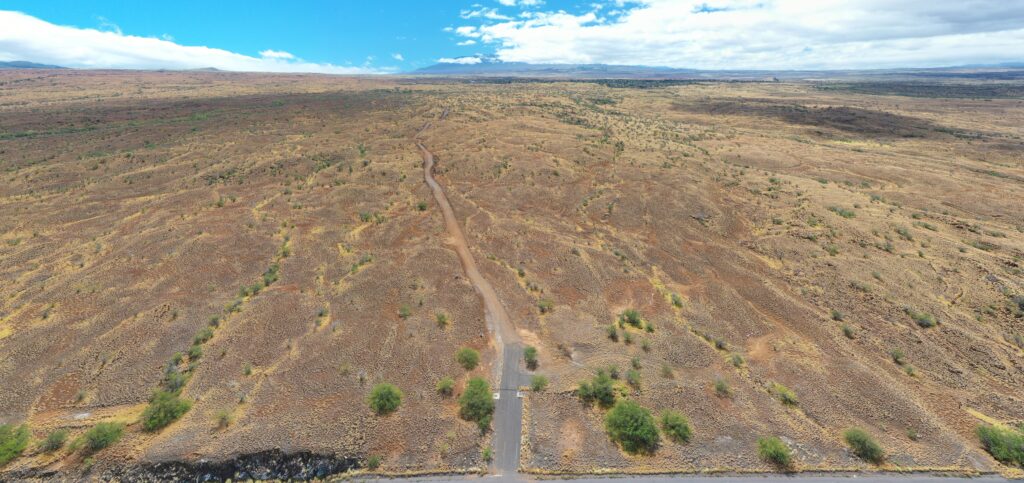
 Waikoloa Village’s alternate evacuation route will be built in several phases. The first phase will ensure evaucations are possible. Later, the road will be paved and expanded to two lanes to allow for traffic both ways. (Courtesy: Matt Chalker)
Waikoloa Village’s alternate evacuation route will be built in several phases. The first phase will ensure evaucations are possible. Later, the road will be paved and expanded to two lanes to allow for traffic both ways. (Courtesy: Matt Chalker)
The community was among the first in Hawaii in the early 2000s to be accredited by Firewise, which has since helped organize several events to help prepare residents for the worst. That work includes training for local Firewise ambassadors in assessing homes for risk.
Another group, the Wildfire Safety Advocates of Waikoloa, secured a second evacuation road in addition to the single-lane, gated route residents believed insufficient. The Aug. 8 fires gave that project new urgency.
The county is “very aware of us and our needs” but resources have always been limited, said Matt Chalker, of the Waikoloa wildfire safety group.
The wildfire group is organizing a forum with its County Council and mayoral candidates to focus on mitigating wildfire and ensuring the community is prepared.
On Kauai, for similar reasons, Jeremie Makepa created Aina Alliance in Anahola to address the risk that wildfire posed to his Hawaiian Home Lands community. He has worked since the pandemic to restore hundreds of acres of land around the DHHL plots with the help of county grants and community volunteers.
Enforcers
The group of residents and fire experts at the Island and Bluffs spent about an hour touring the subdivision, assessing homes, asking and answering questions.
One empty lot in the subdivision has been closely mown under the homeowners’ association rules. The owner does not live on Maui but the rules state that the grass must be cut.
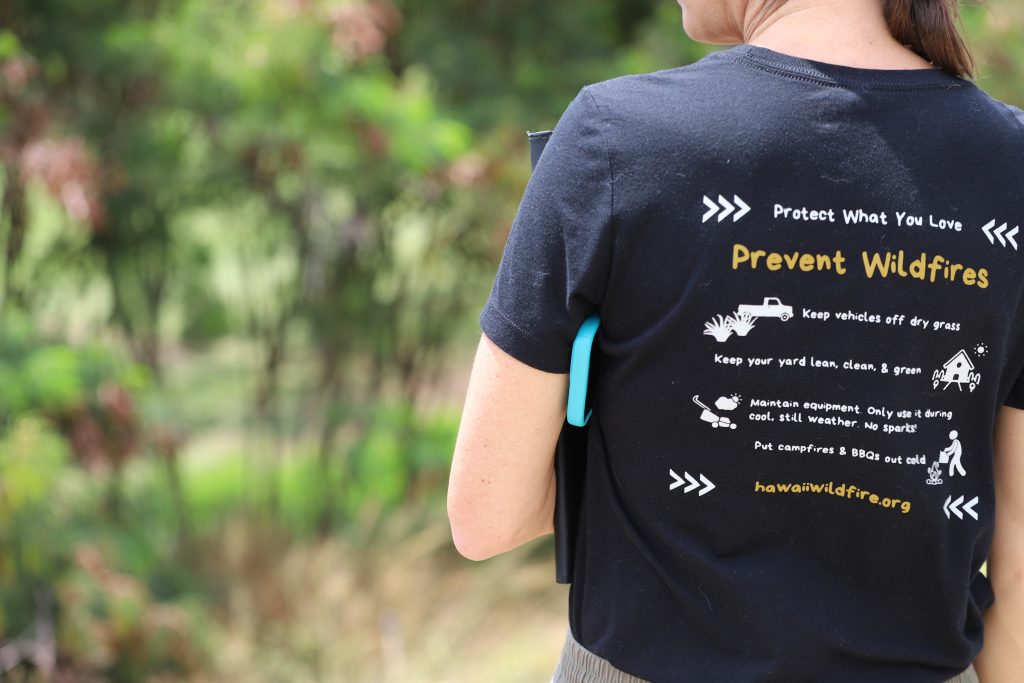
 Hawaii Wildfire Management Organization Co-Executive Director Elizabeth Pickett has been working in overdrive since the Aug. 8 fires of 2023. That includes creating a long list of new Firewise Communities around the state. (Thomas Heaton/Civil Beat/2024)
Hawaii Wildfire Management Organization Co-Executive Director Elizabeth Pickett has been working in overdrive since the Aug. 8 fires of 2023. That includes creating a long list of new Firewise Communities around the state. (Thomas Heaton/Civil Beat/2024)
It’s a rule that many jurisdictions around the country struggle to enforce. So the homeowner’s association has taken the lead.
Other homeowners’ associations are doing the same.
Maui County has shown some initiative, announcing various measures to get tough on landowners’ management of their lands. Jenkins wishes they’d started earlier.
“I think that maybe we wouldn’t have lost as many people if there were some mitigation efforts in place already,” Jenkins said. “There’s things that could have been done. I feel strongly about that.”
How To Address Wildfire Hazards Around Your Home
Wildfires threaten homes through embers, direct contact with flames or radiant heat. Embers pose the greatest risk to homes, according to the Institute For Business & Home Safety. Winds can carry the embers for miles with the ability to start what are known as “spot fires.”
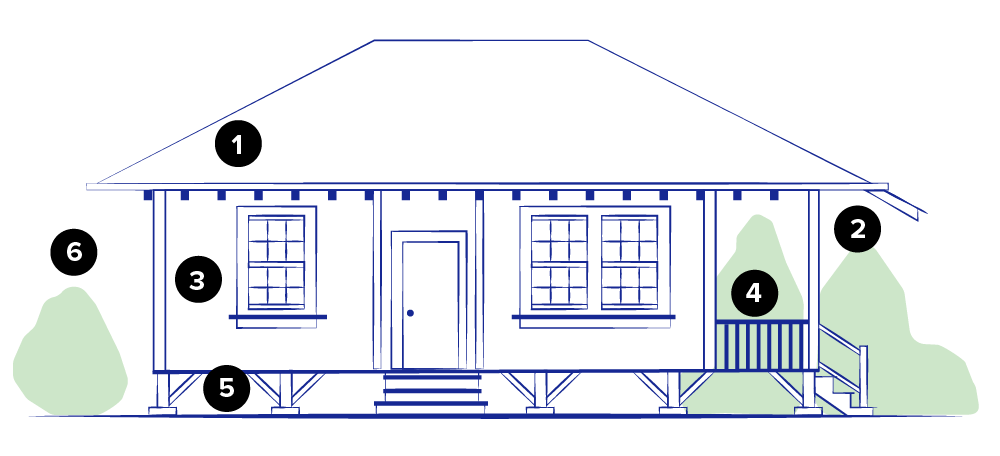
 Illustration based on HSPA “Cottage for One Family or Single Men”. (HSPA Collection, University of Hawai’i at Mānoa)
Illustration based on HSPA “Cottage for One Family or Single Men”. (HSPA Collection, University of Hawai’i at Mānoa)
Roof
Remove all debris from roof and gutters, if applicable.
Consider replacing wood shingle roof with asphalt shingles, tile or metal roofing material.
Awnings
Consider covering eaves, the horizontal area under awnings.
Utilize fire-rated vents or cover existing vents with fire-rated metal mesh.
Walls and Windows
Wood panels and board are most susceptible to fire. Noncombustible materials like metal, masonry or fiber cement panels are recommended.
Windows are among the weakest features on a house. Metal window screens or shutters significantly help against embers.
Lanai
Remove flammable furniture made of wood or plastic, replace with aluminum or metal.
Remove anything stored underneath the home; clear vegetation, including grasses and weeds.
Under-home area
Install 1/8-inch or finer metal mesh to keep embers out.
Remove anything stored underneath the home; clear vegetation, including grasses and weeds.
Around the house
Ensure the five-foot perimeter around house is clear of vegetation and other flammable materials, such as barbecue equipment.
Replace wood mulch with gravel, pavers, concrete or other non-flammable material.
Remove vegetation within the five-foot perimeter.
Source link : https://www.civilbeat.org/2024/08/hawaii-has-done-little-to-shore-up-neighborhoods-against-fire-some-are-doing-it-themselves/
Author :
Publish date : 2024-08-21 23:01:00
Copyright for syndicated content belongs to the linked Source.
